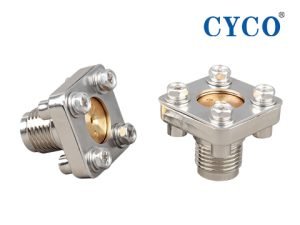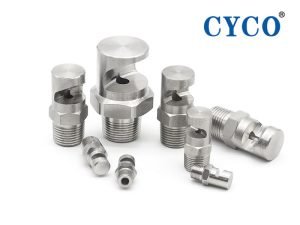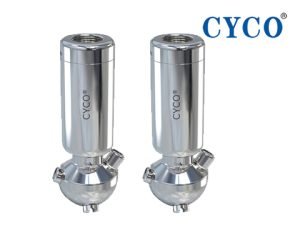Applications of 2-fluid nozzles in wafer cleaning — 2-fluid nozzles for wafer cleaning
Wafer cleaning is a crucial part of the semiconductor manufacturing process, the purpose of it is to remove particles, organics, metal ions and other pollutants on the wafer surface to ensure the smooth running of subsequent processes.
The 2-fluid nozzle is a nozzle type commonly used in wafer cleaning equipment, and its function is to spray the cleaning fluid onto the wafer surface at a certain speed and angle to achieve uniform and efficient cleaning.
In this article, we will introduce the characteristics, working principle, design points and application areas of 2-fluid nozzles.

Characteristics of 2-fluid nozzles
The 2-fluid nozzle is a bifluid nozzle that has the following characteristics:
1. Excellent cleaning effect: the 2-fluid nozzle can spray the cleaning liquid onto the wafer surface at a certain speed and angle, realizing uniform and efficient cleaning and removing all kinds of pollutants.
2. Wide range of applications: 2-fluid nozzles are suitable for different types and sizes of wafers, and the nozzle tips can be adjusted and replaced as needed.
3. Simple operation: 2-fluid nozzles are simple in structure, easy to operate, and have low maintenance costs.
4. High reliability: 2-fluid nozzles are made of high-quality materials and machining processes, providing long service life and low failure rates.
Operating principles of 2-fluid nozzles
Gas and liquid are mixed simultaneously through the nozzle opening to produce a high-speed jet that sprays the cleaning solution onto the wafer surface. High-speed jets can generate impact force to peel contaminants from the wafer surface, while the cleaning solution can penetrate into the tiny structures on the wafer surface to realize deep cleaning.
Design points for 2-fluid nozzles
1. Material: in order to ensure the reliability and durability of the nozzle, high quality materials are usually used, such as stainless steel, high-strength plastics, and so on.
2. Size: need to be selected according to the wafer size and the properties of the cleaning fluid. In general, the diameter of the nozzle should match the diameter of the wafer to ensure uniform spraying.
3. Structure: it has a great influence on the spraying effect. For highly efficient cleaning, the nozzle orifice should be designed at an angle and shape to generate a high-speed jet and form a uniform spray.
4. Liquid flow and pressure: to achieve efficient cleaning, it is necessary to choose the appropriate liquid flow and pressure according to the nature of the cleaning fluid and the cleaning effect that needs to be achieved.
5. Gas flow and pressure: appropriate gas flow and pressure need to be selected based on the wafer size and the nature of the cleaning fluid.

Application areas for 2-fluid nozzles
2-fluid nozzles are widely used in semiconductor manufacturing for the following purposes:
1. Wafer surface cleaning: by spraying the cleaning solution onto the wafer surface at a certain speed and angle to remove particles, organic matter, metal ions and other pollutants to ensure the smooth progress of the following process.
2. Wafer cutting: during wafer cutting, the efficiency and precision of cutting can be improved by spraying the cutting fluid onto the cutting line at a certain speed and angle.
3. Glass substrate etching: the depth and shape of the etching can be controlled by spraying the etching solution onto the glass substrate at a certain speed and angle.
4. Other applications: 2-fluid nozzles can also be used in other areas where a mixture of gas and liquid is required to be sprayed, such as chemical reactions, materials processing, etc.
Conclusion
2-fluid nozzles, a commonly used nozzle type, play an important role in fields such as semiconductor manufacturing. Understanding its features, working principle, design points and application areas will help to apply and maintain this type of nozzle better.






